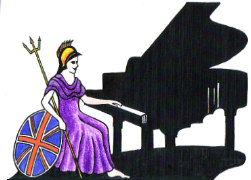Teachers, Accompanists and Piano Entertainers in the UK

UK Piano Page

Tain, Highlands IV19
Scotland
Friendly, structured and fun lessons in Piano and Musicianship! I am a professional musician and teach students aged 4 and above. I travel to students...
184 St. Ann's Road
Haringey, London N15 5RP
England
J. Reids supply new and fully restored pianos from
1 Queen Street
Horsham, West Sussex RH13 5AA
England
The Horsham Piano Centre was established in 1980
Central Arcade
Newcastle upon Tyne, Tyne and Wear NE1 5BP
England
JG Windows Ltd is one the UK's longest established
Harrogate Road
Beamsley Hill
Skipton, North Yorkshire BD23 6HZ
England
Main dealers for Kemble Pianos. Complete range
Regency Workshops
Hunters Bar
Sheffield, South Yorkshire S1 2PN
England
Suppliers of quality pianos, new and secondhand
Music Festival for performers and guests Our 10th
18-06-2022 12:30PM
The Morecambe Bay Piano Group was set up to extend
11-12-2021 01:00PM
The Morecambe Bay Piano Group was set up to extend
08-01-2022 01:00PM
The Morecambe Bay Piano Group was set up to extend
12-02-2022 01:00PM